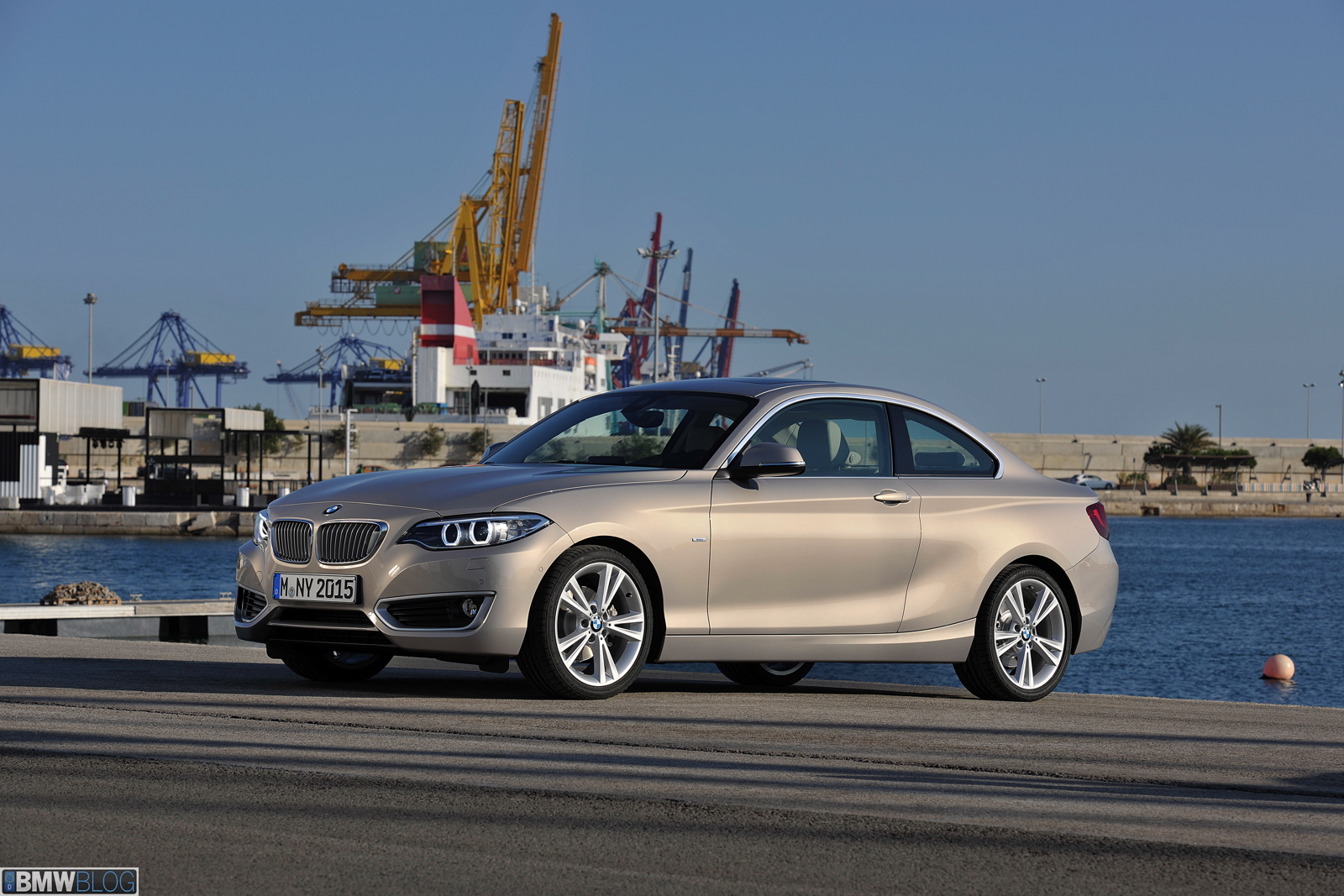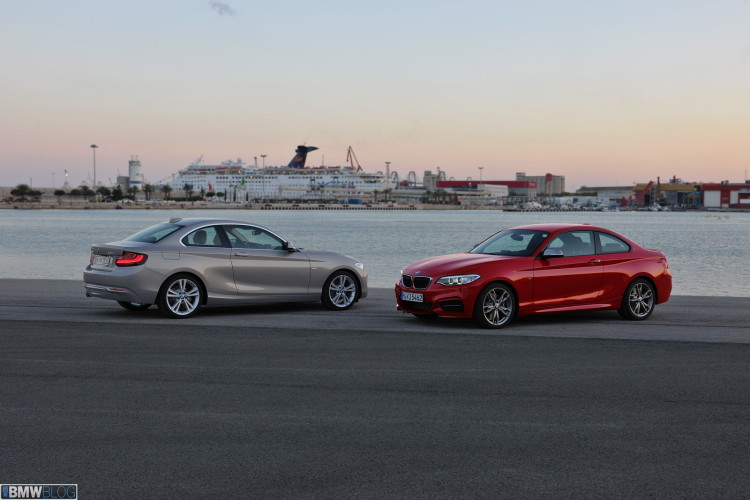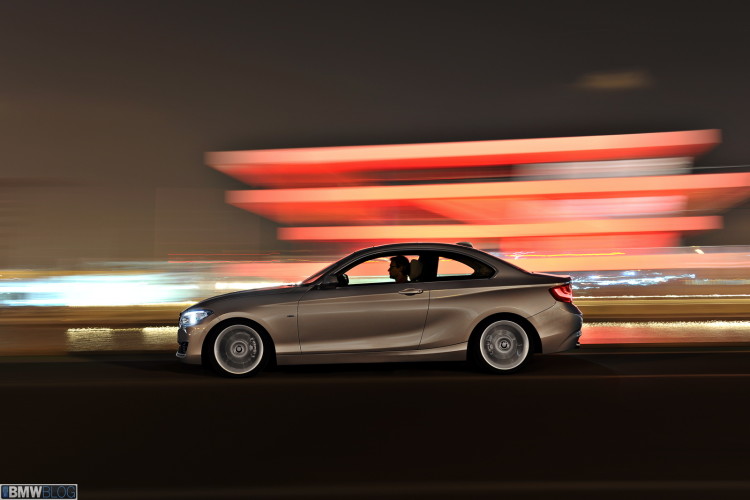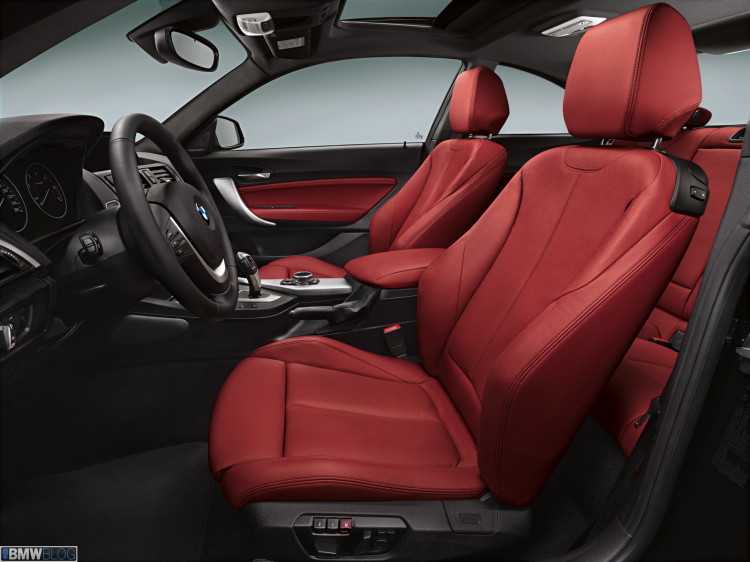While the BMW M235i soaks up all the love, a lovely little alternative, the 228i, goes about its business relatively unheeded. But the 228i is worth a good look. This may be the best value in BMW’s line-up at the moment.
Whilst my 135i was in for routine service, I asked to drive a 2 series, and they flipped me the keys to a 228i – OK, I thought, the M235i might be on my shopping list, but let’s get the younger sibling tested too. I fired it up, trundled around a bit to warm it up then hit the on-ramp to the nearby free-way.
The immediate sensation on driving the 228i, with the standard eight speed automatic, was how lively it felt. There was a real urgency when the throttle was prodded at highway speeds in automatic mode. The down-shift was quick, boost was right there, and the little car scooted around traffic. Not bad performance for the M235i’s baby brother.
That got me to thinking (always a bad sign); as an addled teenager, I had lusted after a 1970 Plymouth Roadrunner, it was the hot lick of the day and all the ‘kool kids’ had one (said kids fathers’ owned the Chrysler/Plymouth store in town). And finding a clean restored example of a Roadrunner will set you back $50,000 easy these days.
But something amazing has happened in all these years after 1970, cars have gotten better. So the BMW 228i produces the same 0-60 time as 1970 Plymouth Roadrunner (with the big engine) – 5.4 seconds, but, unlike the Roadrunner, the 228i steers and stops as well as it goes in a straight line.
The 228i’s steering, electrically assisted rack & pinion, provides decent feedback and has a fairly quick ratio – lane changes at speed are crisp and confident. The car goes where it’s pointed. Of course, it was equipped with all season run-flats so if more ‘feel’ is desired a change of tires may be in order or the M-Sport option could be checked which includes summer high performance tires. Braking was more than adequate with good pedal modulation – but checking the M-Sport brake option may be the ticket if the car will be used for track days.
I found the power to be more than adequate – again this is a sub six second to 60 car, something that was unheard of outside of a handful of extremely thirsty V8s not that long ago. How good is this engine? It delivers that 0-60 time and yet can also do 23/36 EPA rated MPG – those are seemingly irreconcilable numbers and yet BMW has pulled it off.
One thing though – an ongoing quibble I have with the N20 engine – the exhaust note doesn’t resonate with me. It doesn’t sound sporting. There is just something tractor-like in the exhaust note of the N20 that is disquieting. So maybe the after-market will provide a solution – the parts are already out there for intake, exhaust, and engine management.
The BMW 228i steers, accelerates, and brakes like a performance car, but is it in a league of its own – but there is competition. A zero option 228i will run just under $33,500, when you add the M-Sport line and M-Sport brakes, the total climbs to over $36,000 delivered – that’s without navigation, leather, technology package, luxury package, metallic paint, or any number of other possibilities. It is not hard to configure a well equipped version of the 228i for over $45,000.
If you are shopping for a rear wheel drive four place coupé, you could look at the significantly slower, yet highly entertaining, Toyabura twins – a well optioned Scion FR-S comes in at a hair over $30,000. Hyundai offers a 2.0T four cylinder Genesis coupe goes for around $27,000, base model trim – but while it has the same size engine, an eight speed transmission, and significantly lower fuel economy numbers – it manages just around 6.0 seconds from 0-60, a half second or so slower than the 228i. So the performance differential for the 228i’s competitors is not dissimilar to the price differential. And that doesn’t account for perceived handling and braking feel. And then at some point the interiors need to be compared, after all that’s where you spend your time with the car.
Comparing interiors is a bit difficult since the Hyundai offers cloth/leather, the Toyabura offers leather, and the BMW vinyl or, optionally, leather. Bear in mind though, a lot of manufacturers offer leather surfaces that are at best technically leather. In the same way that canned ham is technically ham, the leather used in less expensive cars is a highly processed amalgam of inferior piece parts bonded together and embossed into seating surfaces. Therefore, outside of specific luxury offerings, take the term ‘leather’ with a grain of salt – and consider alternatives, they may actually be better than the ‘leather’ offered.
But the 228i’s interior, even in vinyl (or in BMW-speak, Sensatec), has a degree of finish that is noticeably better than its competitors. BMW’s styling gurus have upped their game on the 2 series, compared to the previous 1er coupé. The 2 series offerings have a bit more ‘jewellery’ around the HVAC and audio controls. The built in iDrive display is perfectly placed and the surfaces that are normally touched all have good feel. This is a car you can get comfortable sitting in.
So, even with the siren song of the M235i, the 228i is no slouch. It is a very competent performance car at an attractive price. Worth a look if the thought of $43,000 for a bone stock M235i seems beyond reach.
Reviewed by Hugo Becker on
.
Test driving the new 2014 BMW 228i Coupe
So, even with the siren song of the M235i, the 2014 BMW 228i Coupe is no slouch. It is a very competent performance car at an attractive price. Worth a look if the thought of $43,000 for a bone stock M235i seems beyond reach.
Rating: 4.2









































































